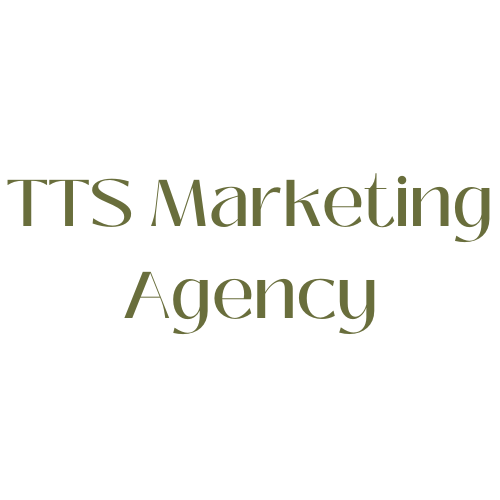Choosing the Right Social Media Platform Based on Formats & Functions
With so many social media platforms available, it can feel overwhelming to decide where your business should focus. But here’s a little secret—not all platforms are created equal. Each one offers different formats (like videos, stories, or posts) and functions (like discoverability, engagement, or SEO potential). By understanding how these formats and functions work, you can choose the right platforms that align with your goals and strengths.
Let’s dive into the key formats and functions of major platforms and how to use them to your advantage.
1. TikTok: Discoverability King
Formats: Short-form videos, Stories, Live videos, Carousels.
Functions: Discoverability-focused, with a feed designed to expose users to new creators through the For You Page (FYP).
If your goal is discoverability—reaching new people who have never heard of your business before—TikTok is a fantastic option. The platform’s algorithm serves up content to people based on their behavior (what they watch, like, and interact with), meaning your content can reach users who don’t even follow you yet. However, keep in mind that TikTok’s focus is video, so if creating video content feels overwhelming, you may want to consider starting small or repurposing existing content from other platforms.
2. Instagram: The Swiss Army Knife of Social Media
Formats: Photos, Videos (Reels), Stories, Carousels, Live videos, Highlights.
Functions: A mix of discoverability (Reels), engagement (Stories), and value-based content (Pinned posts, Highlights).
Instagram offers one of the most diverse sets of formats, making it a highly versatile platform. If you want to mix visual content with deeper storytelling, Instagram lets you do that through photos, graphics, Reels, and Stories. Reels tap into discoverability (thanks to its TikTok-like algorithm), while Stories offer an excellent way to connect more intimately with your audience. If your business thrives on showcasing visuals (like photos of products, infographics, or short how-to videos), Instagram is your go-to platform.
3. LinkedIn: The Professional’s Playground
Formats: Posts (text, photos, videos), Articles, Audio Events, Groups, Live videos.
Functions: Networking, thought leadership, and lead generation.
LinkedIn is a powerful tool for professionals and B2B businesses. If your goal is lead generation or establishing yourself as a thought leader in your industry, LinkedIn offers great opportunities. The platform favors longer-form content, such as articles and video posts, allowing you to share your expertise in more depth. Additionally, LinkedIn’s groups are great for engaging with niche communities and building relationships within your industry.
4. Pinterest: The SEO Goldmine
Formats: Pins (photos, videos, graphics), Carousels.
Functions: Searchability, long-term content discovery, SEO optimization.
Pinterest isn’t just a visual platform—it’s a powerful search engine! If your business relies on SEO and you want your content to be discoverable for months (even years), Pinterest is a great platform to consider. Content on Pinterest is evergreen, meaning that your pins (whether they’re photos, infographics, or videos) can continue driving traffic to your website long after they’ve been posted. It’s a must-use if your audience loves inspiration, DIY ideas, or tutorials.
5. Facebook: Community Building Hub
Formats: Posts (photos, videos, text), Stories, Reels, Live videos, Groups.
Functions: Community building, engagement, and networking.
Facebook is an excellent platform if you’re looking to build a community. With features like Groups (both public and private), Facebook allows businesses to create spaces where people can interact not just with you but with each other. Groups foster a sense of belonging, making Facebook ideal if you’re focusing on cultivating deeper relationships with your audience. Additionally, Reels and Stories allow for creative ways to engage and share behind-the-scenes content.
6. YouTube: The Content Powerhouse
Formats: Long-form videos, Shorts.
Functions: SEO, discoverability, education.
YouTube is perfect if you’re creating educational or tutorial-based content, and it has the added bonus of being the second-largest search engine (right after Google). The platform’s long-form videos are great for businesses looking to provide in-depth content like how-tos, reviews, or interviews. If you want to focus on SEO, YouTube is the place to be—your videos can show up in both YouTube searches and Google results. YouTube Shorts also offer a chance to engage users with bite-sized, discoverable content.
7. Twitter (X): Real-Time Engagement
Formats: Tweets (text, photos, videos), Threads.
Functions: Real-time updates, awareness, and connection.
If your business thrives on real-time engagement—like responding quickly to industry news or joining trending conversations—Twitter (now called X) is your platform. Twitter is all about fast, bite-sized content, making it ideal for updates, announcements, or jumping in on relevant topics. Keep in mind that Twitter works best if you can maintain a high level of consistent engagement.
How to Choose the Right Platform for You
When deciding which platform is best for your business, it’s all about aligning with your goals, audience, and content strengths. Here’s a quick guide to help:
Goals: What are you trying to achieve? If it’s visibility, TikTok or Instagram might be your best bet. For community building, try Facebook. For SEO, Pinterest and YouTube are your go-tos.
Audience: Where does your ideal client spend their time? There’s no point in mastering a platform if your target audience isn’t active there.
Capacity: Do you have the resources to create the kind of content that the platform requires? For video-heavy platforms like YouTube or TikTok, you’ll need time (or a budget) to invest in content creation.
Next Steps:
Once you’ve nailed down which platform’s formats and functions align with your business, you’re ready to start creating a focused social media strategy! Need help getting started? Check out my full video on choosing the right platform [here].

